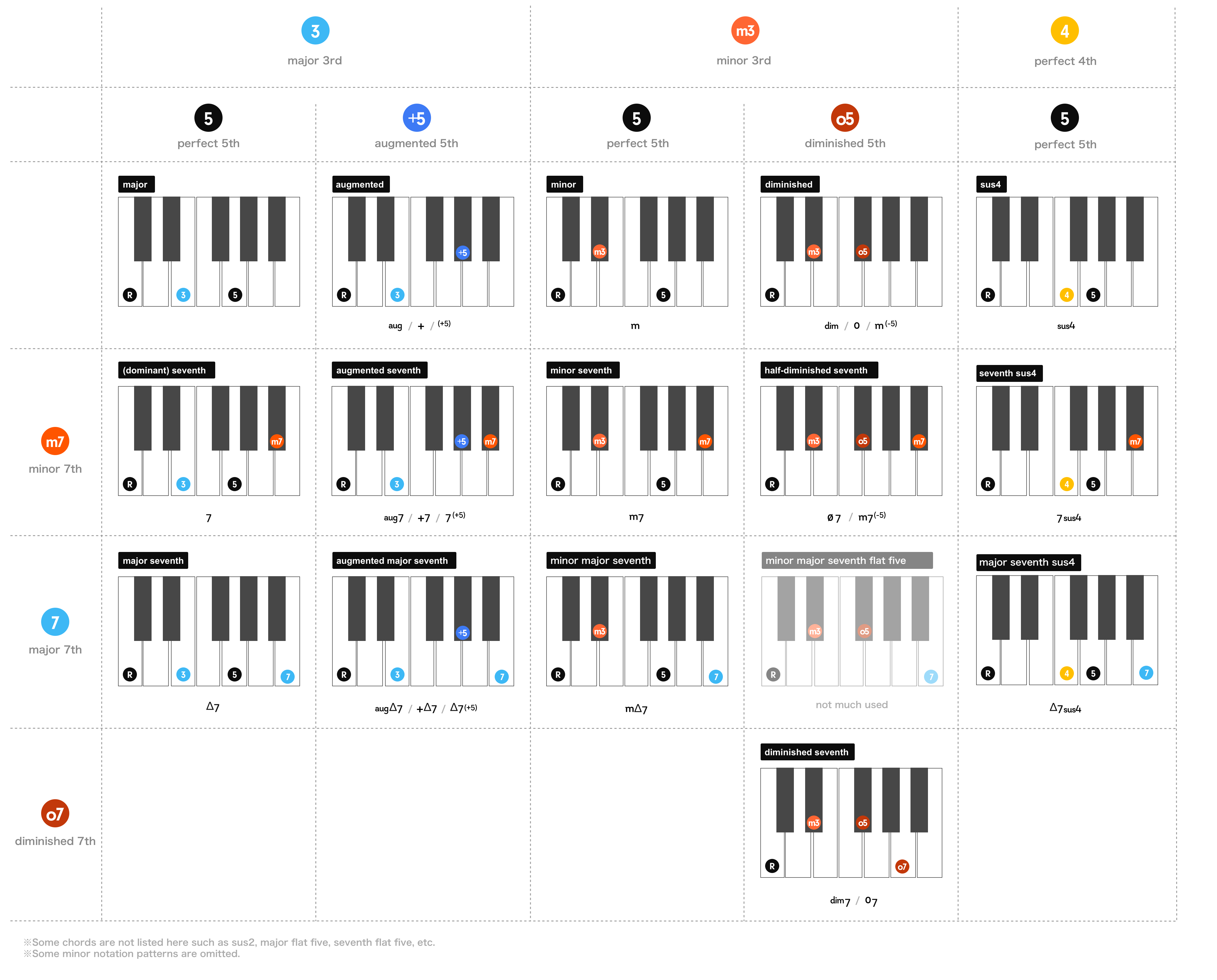Contents
1. Attitude
By knowing “secondary dominants” and “parallel minor chords”, it seems that the range of chords has expanded considerably.
However, upon closer examination, the fundamental chord quality itself is only “major” or “minor”. In that regard, we haven’t departed from the world of very basics at all.
So finally, in this chapter, we’ll be dealing with chords other than major and minor. Naturally, as they all have peculiar sound, they will be used less frequently, but they should enrich musical ideas as good ‘spices’ for music.
Chapter of Memorization
The Chapter III is quite a thorny path. It’s a chapter full of memorization – remembering the names of various chords, their structures, and how to use them, one by one.
Here are the highlights of the chords introduced in Chapter III. Indeed, it’s quite challenging to remember all of them soon. So, it’s fine to temporally skim through the chapter with an attitude like, “Oh~~, great, whatever, huh?”
Just let them go “in one ear and out the other”, and try using the ones you like in your own songs and gradually mastering each one. That is the good way to remember new chords. Memorizing the structure of the chords solely by their degrees or semitone steps is an inefficient methodology, as understanding sound and usage alongside them is what truly becomes beneficial.
2. Expansion and Combination
Before delving into specific chord names, I’d like you to grasp the overall concept of what we’re going to do in Chapter III. The chord types we’ve used in Chapter II were limited to the ‘BBQ style’ where you add notes by skip like Rt3rd5th7th.
Hence, regarding the variety of chords we’ve created, with seventh chords, it was just a combination of the 3rd major/minor and 7th major/minor, totaling only four types.
In Chapter III, we’ll generate variations by altering the position of 3rd5th7th. For instance, if you slightly change the formation “1-3-5” to “1-4-5” or “1-2-5”, it immediately births new chords.
Likewise, by raising or lowering the 5th by a semitone, unique sounds will emerge.
In this case, you’ll have the potential to create four types of chords based on whether you start with a major or minor chord, and whether you raise or lower the 5th.
Considering this in terms of seventh chords, the combinations increase further. As there are two possibilities for the 3rd, 5th, and 7th, it totals to eight combinations.
Do you think that eight is too many to remember? But Think in reverse. Even if there appear to be complex chord names, when broken down into their components, they’re simple. It’s more efficient to learn by understanding the naming system rather than rote memorization.
So, for those who have a solid understanding of the differences between major sevenths, minor sevenths, and dominant sevenths, Chapter III isn’t particularly challenging. If you find yourself getting confused as you read, perhaps it’s good to pause and spend some time on practice.
Continue
